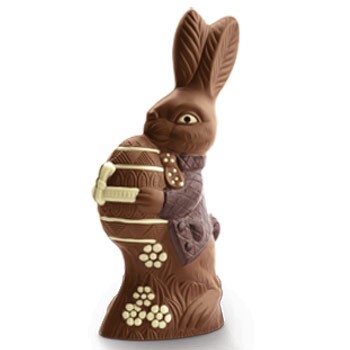
by Lauren Deitsch, Chocolate Expert for the Menuism Chocolate Blog

As someone who works with fine chocolate every day (hard life!), I often wonder why it doesn't come with care instructions attached, just like the tag on your cashmere sweater. Now, wouldn't that be handy?
After all, not everyone knows how best to take care of chocolate -- and without the equivalent of "hand wash, cold water, lay flat to dry," what's a chocolate lover to do?
Have no fear! Here, in a nutshell, is all you need to know to give that next artisanal chocolate bar or tasty box of bonbons the love and attention they deserve, so you can enjoy every last bite.
Keep it super-fresh.
And stay cool.
As for bonbons, caramels, and the like, they're a different story. If you have a mass-production confection made by one of the bigger brands, it may well keep as long as solid chocolate (hello, preservatives!).
Then again, if you're enjoying handmade artisanal chocolates made with fresh dairy -- and I hope you are -- it's best to check directly with the chocolate maker or shop where they were made. Not only can they tell you exactly how long your chocolates will maintain their quality, but they'll be happy you cared enough to ask.
Fresh air + sunlight = nice for you. Not for chocolate.
So unless you finish all your chocolate in one sitting (see "no judgments," above), be sure to tightly re-wrap and store it in an airtight container or bag, away from any light source.
Hey, who put breath mints in my chocolate?
Chill if you must, but follow protocol.
#1: Summertime Exception!
Don't have access to a cool or low-humidity spot to store your bonbons and bars? Ok, go ahead and put them in the refrigerator (yes, I know I just said not to do that). Two important caveats: Before placing in the fridge, make sure the chocolate is tightly wrapped to prevent it from picking up odors or condensation. And when you remove it from the fridge, let it come back to room temperature before unwrapping. Stored this way in your fridge, they'll last for anywhere from three to six months.
#2: The Lucille Ball Exception (a.k.a. "Help, I can't eat them fast enough...!")
Let's say you neglected to follow my first tip above: buy only what you can consume in a short period of time. So now you find yourself with a huge batch of fresh chocolate truffles, and you don't know how you'll possibly manage to polish them off by the end of their recommended shelf life. There are worse problems to have! And this is an easy one to solve. To keep your bonbons and other ganache-filled chocolates from going bad, use the same Summertime Exception method outlined above to refrigerate them.
And should you need to store them even longer (say, six months to a year), here are two simple steps to ensure safe freezing of your chocolates:
Step 1: Again, make sure everything is tightly wrapped and moisture proof, then move your chocolate stash to the refrigerator.
Step 2: After a full 24 hours, move it to the freezer. Doing this in steps is crucial to preventing temperature shock, as well as preserving the texture of your chocolates. And the same holds true when removing from the freezer -- just follow those two steps in reverse. Put them in the fridge for a full 24 hours. And when you take them out, be sure to allow them to reach room temperature before unwrapping and enjoying.
Now that you're armed with the knowledge of how to care for your chocolate, go out and get some! Splurge on that enticing craft chocolate bar you've been eyeing at the market, or fill your online shopping cart with the latest trends in flavored bonbons. Explore, learn what you like, what you don't like, and above all, enjoy.
And if you happen to find yourself with a little more than you meant to buy? Again, no judgments here -- and this time, you'll know exactly what to do.
Related Links from the Menuism Chocolate Blog:
• How Chocolate Easter Eggs Were Hatched
• Chocolate and Terroir: Discovering a Taste of Place
• When Chocolate Meets Technology
The Super-Fresh Guide to Storing Chocolate originally published on the Menuism Chocolate Blog.
Lauren Deitsch is the Research & Development Specialist / Chocolatier at Lake Champlain Chocolates in Burlington, VT, where she works to develop new chocolate recipes every day. She's a graduate of the Culinary Institute of America in Hyde Park, NY. In addition to a love for all things chocolate, she enjoys connecting with friends, reading, traveling, hiking, running, and cooking.